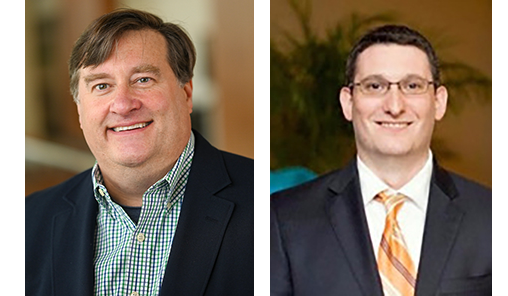| David Martin: |
When it comes to NIL and the transfer portal, things are heating up, but the temperature will get even hotter if – or more likely, when – universities begin serving as the provider of a large chunk of the money being
thrown around. A big question I have is what happens when universities soon begin
managing NIL for players? How long will it be before one of these athletes sues the
university or the athletic department directly? The liability factor alone is daunting.
And what about the transfer portal? Right now, it’s literally unrestricted free agency.
That’s something even pro teams aren’t into. Fans don’t like it in professional sports,
and they are even more adamantly against it in collegiate athletics.
|
| Glenn Richey: |
When I was at the University of Alabama, I was the academic representative for the
business school for eight years, selected by Sr. Associate Athletics Director Jon
Dever and Coach Nick Saban. I helped recruit players, starting with the Julio Jones
and Mark Ingram class, meeting with families on Saturday mornings of home games. I
taught hundreds of athletes, traveled with the Bama football team each year, and assisted
with picking mentors and tutors. My role expanded to recruiting any sport that needed
help. During that time, Jon kept the Alabama athletic program consistently ranked
in the top tier of SEC student graduation rates largely because of the academic support
processes he and Saban developed.
What I found was that these young men and women come in, they have tutors, and they
have required study halls. They built valuable relationships with people in academic
counseling and support services to make sure they got the degree they and their parents
were promised during recruiting visits, including hands-on educational support.
And then on the back end, if they’re among the very high percentage of student-athletes
who don't go pro, there are opportunities for them to work for a car dealership, marketing
agency, broadcasting, or some other job related to their major upon graduation, and
the university helps with that career placement.
But when you transfer, you give all those valuable relationships up. You don't know
who your counselors are at your new school, you don't know who you're working with,
and they don’t know you. Yes, they are welcoming, but you are, essentially, starting
out all over again from an academic support team and relationship building perspective.
And these same challenges of transferring schools impact the student-athlete’s athletic
prospects – new training, coaches, schemes, playing time adjustments, etc. – put added
pressure on athletic performance, which is related to NIL payments and future professional
opportunities. And don’t forget, the limit on NCAA eligibility remains at four years
within a five-year period.
Eligibility is making the transfer portal an uneven market. Universities typically
do not accept all the credits from another school. And according to the NCAA, 40 percent
of required coursework for a degree must be complete by the end of the second year,
60 percent by the end of the third year and 80 percent by the end of their fourth
year. That needs to be explained to student-athletes and considered before transferring.
After years of the NCAA working to award college football programs and basketball
programs for graduating student-athletes, it looks like we now have a system in place
that almost guarantees that they won't.
And then there’s all the misinformation floating around about the NIL market. Imagine
a young linebacker who is projected as a third rounder transfers from one Power Five
school to another. He arrives and brags a bit about his NIL deal being $350k. Over
time, that number gets published online and filters back to three other NFL-quality
linebackers at his new school. They visit with the coach, noting they are projected
to be NFL second rounders and should, therefore, get at least the same pay. The coach
tells them the third rounder’s NIL deal is $35,000 each year not $350,000. Who do
the players believe?
|
| David Martin: |
And what about the consequences of student-athletes becoming employees of the institutions
they attend? While the NCAA claims that won’t happen, I’m not convinced that this
will be as easily avoided as they do. I see this as an aggravating factor in finalizing
the proposed settlement itself, adding fuel to the fire in ways it appears the NCAA
may not have fully considered or deemed important.
Just take a look at the tax implications of these payments to student athletes. Who
makes sure they and their parents are aware of their withholding and filing responsibilities
– federal, state and local – when agreeing to this compensation? Begin with recognizing
that the tax implications of a 17-year-old dependent are significantly different than
those of an 18-year-old independent adult and then do the math.
What happens when all of a sudden, it’s three years in and the recruited student-athlete
doesn’t play sports anymore, they didn't complete their education and now they owe
back taxes on $20,000 a year and up – or their parents do? That’s not a good look.
|

 Degrees & Programs
Degrees & Programs
 Faculty & Staff
Faculty & Staff
 Career Development
Career Development
 Recruiters & Industry
Recruiters & Industry
